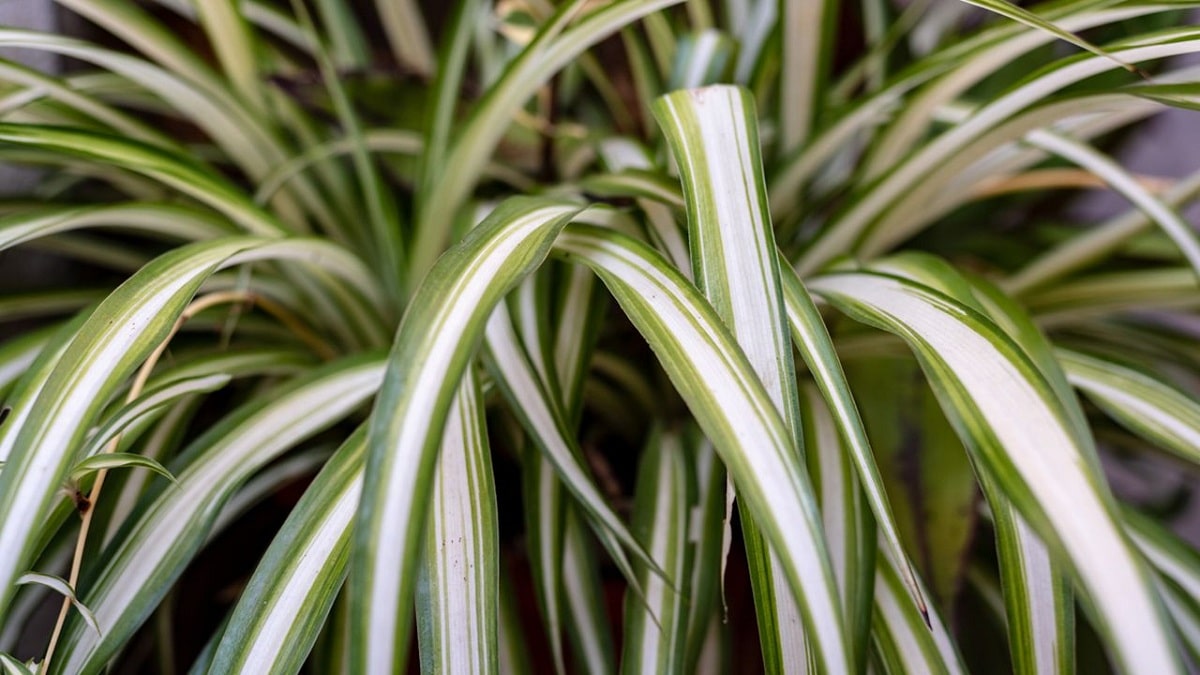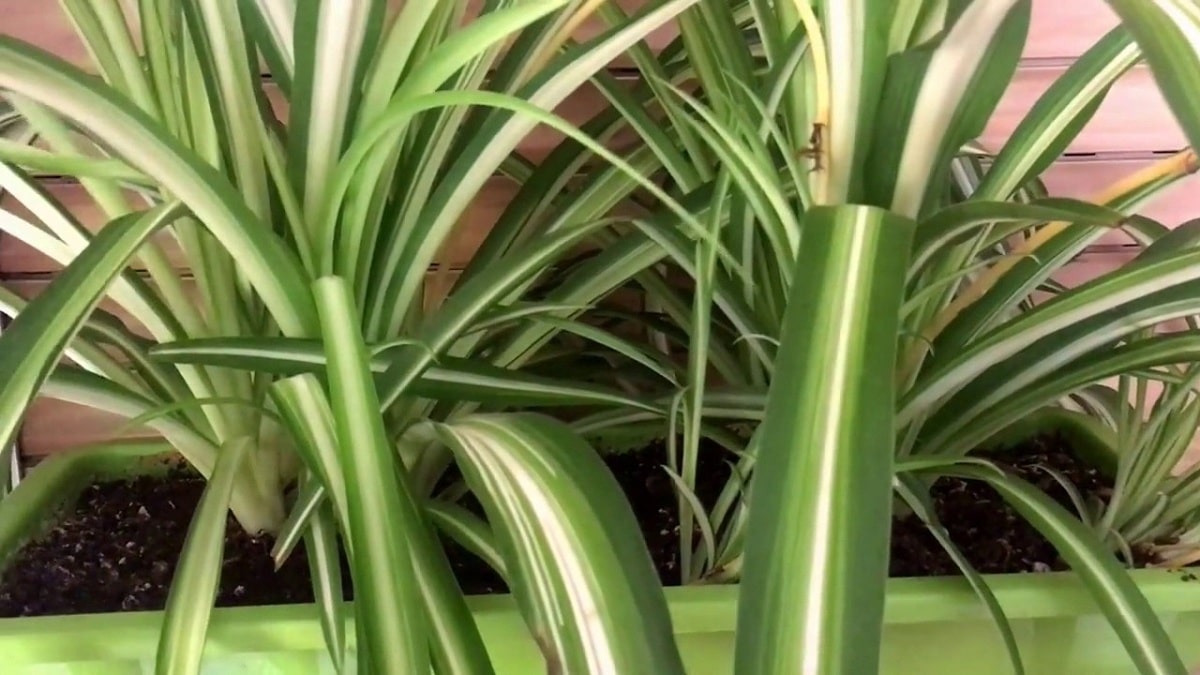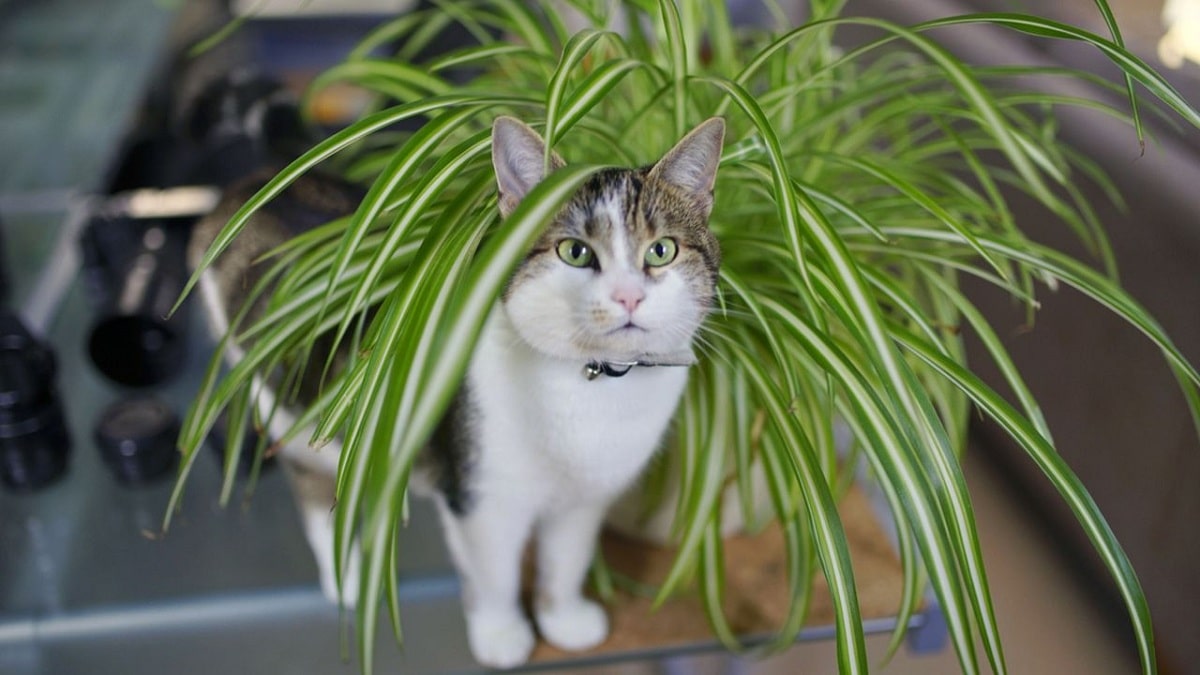
If there is a popular houseplant, this is definitely the one tape. It is tremendously decorative, so much so that it looks good in ... anywhere! Yes, yes, you can have it both in the living room and in the kitchen, since its light needs are not very high unlike others that you find in nurseries. Now, what care does this magnificent plant require? Y, What varieties are there?
In this article we are going to tell you all the characteristics and care of the tape.
Key features

The ribbons are little plants that have always been decorating homes. They belong to the botanical genus Chlorophytum, of the Agavaceae family. They are native to the tropical regions of Africa and Asia, where they live in areas protected from direct sun.
With a height that does not exceed 60cm, they have leaves between 15 and 75cm in length, and between 0 and 5cm in thickness. The flowers are small, generally white. Some species, such as C. comosum, they produce suckers which are very easy to get ahead: simply they must be cut and planted in a pot with a substrate composed of black peat and perlite in equal parts.
One of the characteristics that makes this plant highly recommended for interior decoration is that It is capable of renewing the environment accepted by carbon monoxide and formaldehyde. These gases can become toxic and are concentrated in large quantities and are found in varnishes, sprays and cosmetics that are frequently used in the home. This plant has very good characteristics to be able to purify the air in our house.
The ribbon leaves are borne in a basal rosette. These leaves have an elongated shape, pendulous, sharp and green in color with a white line that extends across the entire surface. As for its flowers, they are quite small in size and new rosettes were formed from them. It is as if small miniature plants are created with a perfect shape and that can become adult plants if they are transplanted correctly into another pot.
It is an ideal plant for all those people who are novices in the care of home plants since it is quite rustic. They are able to adapt to various temperature conditions and can withstand low light areas. They can also be placed outside for garden decoration, although here you will need some requirements to survive well.
Belt care
Light and substrate
We are going to analyze what care the tape needs both indoors and outdoors. First of all is the luminosity. If we are going to have the plant in our home we must have guaranteed that the plant it does not need too much light. If you want, it is advisable to place them in some brighter rooms, but as long as the sun does not enter directly.
We can move them away from the windows in the hours of greatest sun exposure. However, the plant resists quite well if it does not receive a lot of lighting. We can see that the ends are dry and it can be for several reasons. The first is due to excess sunlight. If this happens, we must protect the plant so that it is not affected by solar radiation. Another possible cause of dry tips is due to lack of moisture. These plants need enough moisture that we will provide during irrigation.
When choosing the substrate that we will add to our pot, we must choose one that can maintain enough humidity. The most normal thing is to choose a mixture of peat and sand equally. The planter is also important to choose in such a way that it is prepared for the great growth that the tape experiences. You will probably have to divide the plant frequently as it grows since it does not fit in the container. The best way to avoid so many maintenance tasks is choose a deep and wide pot from the first hour.
Irrigation and compost
Although indoors the environmental conditions of the plant do not change as much, it is necessary to adapt to the needs of the belt. Irrigation should be differently depending on the time of year. In winter it is enough with watering the plant once every 5 days or once a week. On the contrary, in the summer time you have to increase the frequency of irrigation to 2 or 3 times a week. If our home is low in humidity, we can spray the plant every so often to help maintain the humidity levels necessary for its proper growth.
If irrigation is insufficient we will see that the tips of the leaves begin to pale or dry out. The growth period of this plant corresponds to the spring and summer months to a large extent. Therefore, during this time of year it is essential that they have the necessary nutrients for development in good conditions. The ideal is to add a liquid type compost or organic compost every 15 days to help with this supply of nutrients. Since it has a great resistance and adaptation to different environments, you do not have to worry too much unless the conditions are not suitable.
Another indicator of the lack of watering is that the leaves begin to constrict and wrinkle visibly. This indicator is usually the one that is given at the beginning. The fact that the tips become dry is something that happens when the plant was already with little watering for a long time.
Outdoor treadmill care

As we have mentioned before, it is a plant that can also be had in gardens. In this case, the care must be somewhat more specific. The great resistance of this plant is applied mainly indoors. If we grow the tape outdoors, it will need a place with indirect light or semi-shade.. Let's not forget that direct sun can cause the leaves to turn yellow, dry out and end up burning.
It does not tolerate frost too much, so it is advisable to protect them if winter temperatures frequently drop below 7 degrees Celsius. Its cultivation is very simple, being able to live in low light conditions. Of course, it must be borne in mind that irrigation has to be frequent, mostly in summer. Thus, we will water 2-3 times a week in the warmest months of the year, and 1-2 every seven days the rest.
Most of the Chlorophytum are very sensitive to cold, being their ideal minimum temperature of 10ºC. However, I can tell you that el C. comosum and C capense They are grown outdoors in shelter in areas where the thermometer drops to -2ºC. for a short time, and they are not damaged. Still, it is a very grateful plant that will look great inside your home.
In addition, it is very resistant to pests. In fact, the only potential enemy it could have is snails. For the rest, it is a "no problems" plant.
I hope that with this information you can learn more about the tape.